December 2 - 8: Mexico (2)
14 December 2016 · Arjan Dwarshuis · 7068 × bekeken
http://www.arjandwarshuis.com/#biggestyear
http://world.observation.org/arjan.php
PLEASE MAKE A DONATION NOW
December 2nd
At 5 AM, after just a couple of hours of sleep, we were picked up by Rafael Calderon, one of Mexico City's finest bird guides. We started at one of Mexico's most threatened habitats, a small marsh right at the edge of the city. Here we found the endangered Black-polled Yellowthroat without too much effort and we got a showy Aztec Rail as a huge bonus. Both these species have suffered inmensly from the ever expanding human population in the Transvolcanic Belt.
After finding Hooded Yellowthroat and Black-backed Oriole in Mexico City's Botanical Gardens, we drove over to another critically endangered habitat, a small patch of grassland in the mountains above Mexico City. Here we tracked down the endangered Siera Madre Sparrow, brilliantly picked up by Rafael.
We finished with a bang. After being so succesfull in the morning we had time to go for Black-Chested Sparrow and the enigmatic Balsas Screech-owl. We managed brilliant views of both!
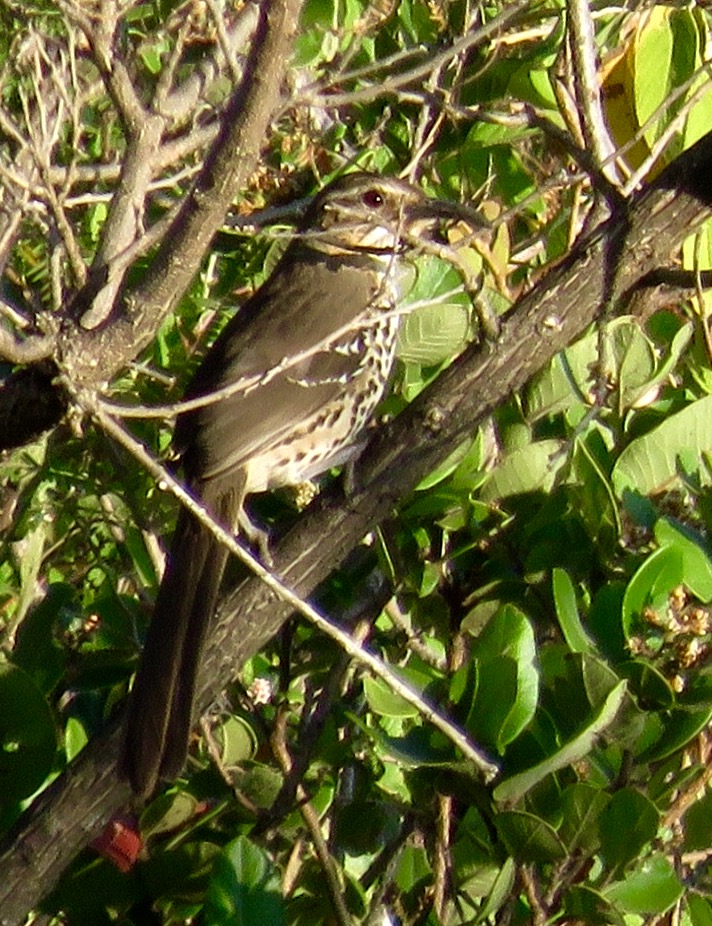

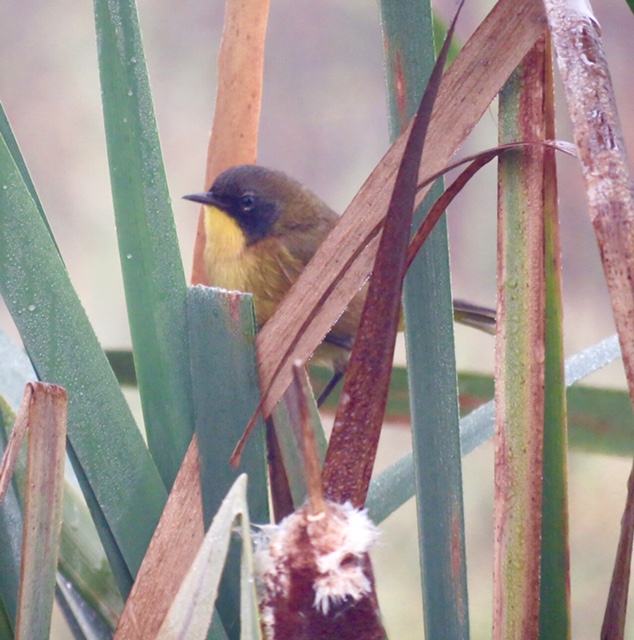
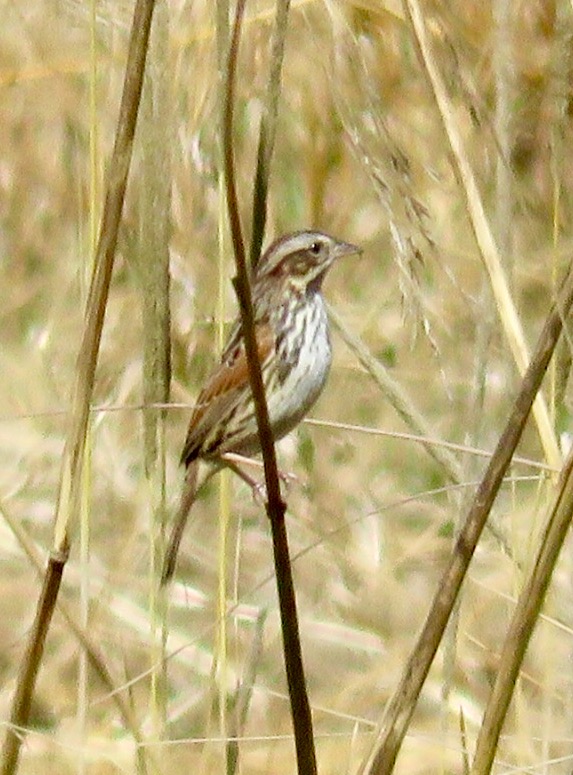
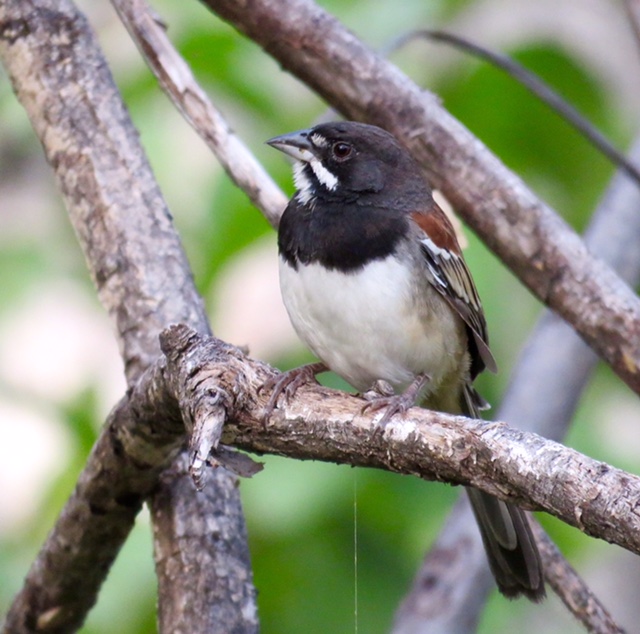
December 3rd CHASING THE BANDED QUAIL
Last evening we had heard the enigmatic Banded Quail, but since we of course all wanted to see this beautiful species, we decided to devote our morning in tracking it down.
We started where we had left off last evening, at the field where we heard the bird calling. We played some tapes, walked the roadside and scanned the edges of the cornfields, but to no avail. After an hour or so we decided that we had to move on since we had to drive some time to get to the site for Transvolcanic Jay. While heading back to Thetlamatzin Lodge Rafael suddenly yelled 'stop!' and there, to our amazement sat a Banded Quail on a roadside pole! We reversed slowly allowing Michael Retter to take one fantastic photo before the bird - and so it turned out at least eight other birds - disappeared in the corn field. Awesome.
For the Transvolcanic Jay we had to drive to a small village where we began our search for this often difficult species in the late morning. After searching in vain for quite some time at the conventional site for the Jay, we decided to test our luck along a small dirt road on the other side of town. This proved a golden decision since we ran into two different family groups.
After that we headed back to Mexico City where - after testing our patience in traffic - we arrived at the airport in time for our flight to Mazatlan.
What an incredibly successful run through the Transvolcanic Belt. Thanks to Rafael Calderons expert guiding that is. I can recommend him very much to any birder visiting this interesting part of Mexico.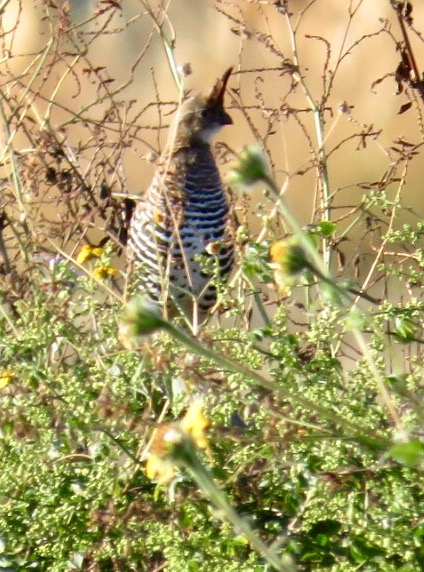
December 4th BIRDING AROUND SAN BLAS
After speeding a short night in a hotel near Mazatlan we headed south towards the town of San Blas. We arrived at daybreak in the mangroves near town where we were met by Mark Stackhouse. Mark has been living and birding in San Blas for over 20 years now so he knows the surroundings abundant birdlife like no other.
We started with a short relaxing boat ride through the mangroves to twitch a roosting Northern Potoo. Luckily the bird sat at its usual snag, so half an hour later this special bird was under the belt. After a short sweep through some coastal scrub - which materialized in a wintering Lucy's Warbler - we made a short stop at Mark's house to look for Grayson's Thrush, a very localized island subspecies that winters in small numbers along the coast of San Blas. This bird may well turn out to be a separate species in the future, so we were keen on seeing it. Lucky the bird cooperated like a charm and ten minutes later we were on our way again.
We spent the late morning and afternoon finding Mexican Parrotlet and Elegant Quail, but dipping on the endemic San Blas Jay, which reaches the northern end of its distribution south of San Blas.
In the evening we said goodbye to Mark, had dinner at the town Tepic and drove up into the pine forest. Here we checked in at the Rancho La Noria bungalows, the only known place in the world to see the poorly known and enigmatic Cinereous Owl...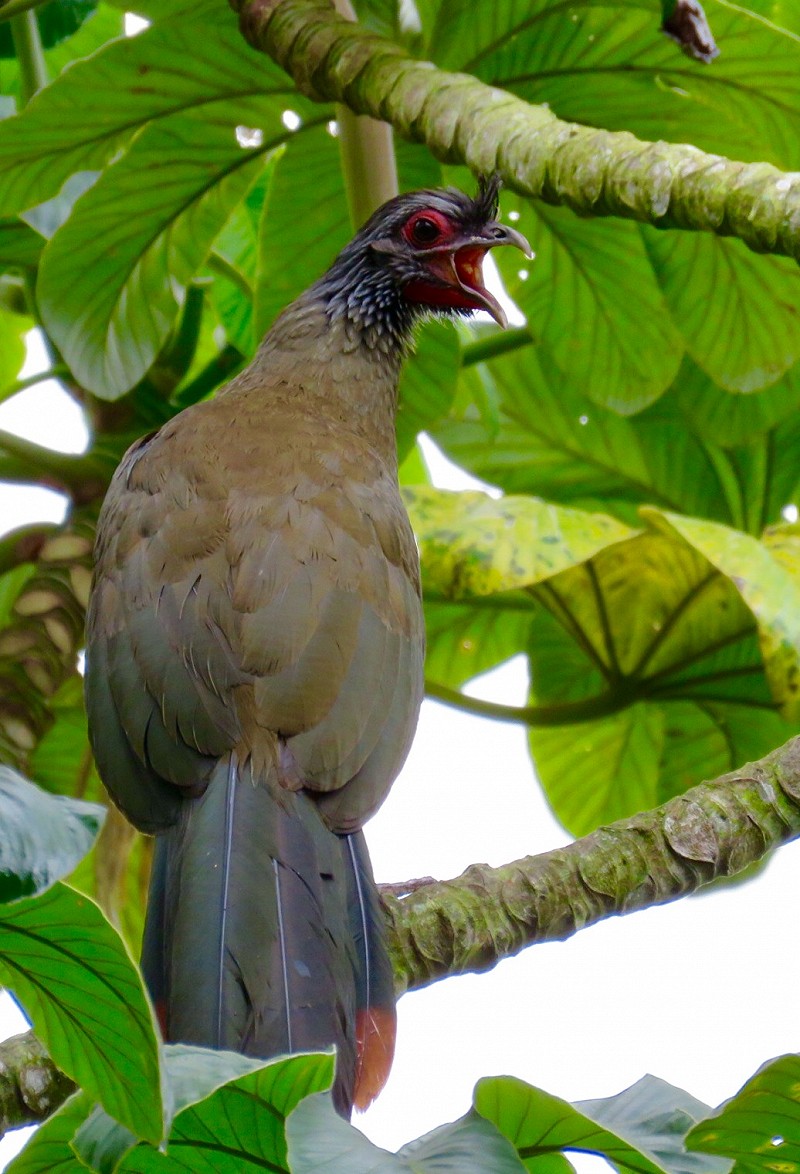
December 5th TRACKING DOWN THE CINEREOUS OWL
Last evening after dusk we had looked for over three hours for the Cinereous Owl, but only managed to briefly hear it. So at 4:30 AM we were up and out in the pine forest again looking for owls. We heard a Cinereous Owl singing right away, but it went quiet shortly thereafter. It was already getting light and still nothing had happened, our chances to connect with this enigmatic owl were diminishing with every minute. We decided to give it one last burst of playback and just when we decided to give up I suddenly saw a huge owl flying in. Cinereous Owl! For the next ten minutes we had amazing views of this rare beast as it was looking down at us from a pine tree, amazing.
It was already light when we got back to our cabin, so we decided to immediately commence with birding. Spotted Wren was easily found around the cabins. For the threatened Mexican Woodnymph we had to drive a little bit further down. A big bonus here was a Grey-collared Becard.
In the late morning we gave it one last go at the San Blas Jay, but a couple of hours later we had to give up on this bird. I guess we had used up our luck with Jays this week after finding White-throated, Dwarf and Transvolcanic Jay. Luckily this proved untrue as just before dusk we found a flock of Purplish-backed Jays south of Mazatlan.
December 6th THE MIND BOGGLING TUFTED JAY
We left Mazatlan when it was still dark and arrived right at dawn at the Tufted Jay Reserve along the famous Durango Highway. The scenery here is absolutely breathtaking with a huge pine forest covered Canyon stretching out as far as the eye can see. Our main target here was of course the most beautiful of all Mexican endemics, the Tufted Jay. We decided that are best tactic to find a flock of these birds would be to slowly drive up and down the road while listening out for their calls. This proved a golden move as only 15 minutes later we heard the distinctive Star Wars gun-like calls of Tufted Jays next to the road. We stopped and had fantastic looks at a group of eight birds. Our main target was in the bag!
We spent a couple more hours birding around the Tufted Jay Reserve. Our best sighting here were two wintering Colima Warblers.
We headed further down the highway towards Durango to do some birding in the arid scrub covered hillsides. This resulted in one very unexpected sighting, a male Lucifer Sheartail.
We spent the rest of the day on the road and spent the night in the city of Durango since it is unsafe to drive at night in this part of Mexico.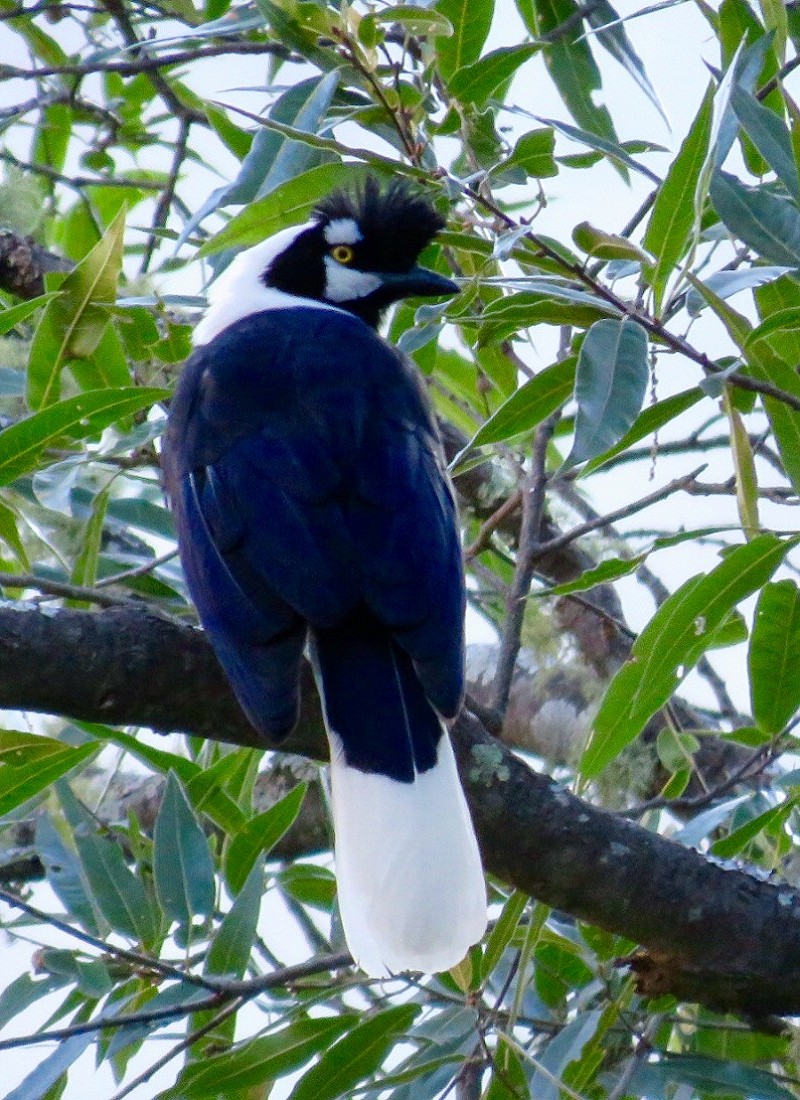
December 7th BIRDING IN THE THREATHENED GRASSLANDS
Today we saw the endangered Worthen's Sparrow on the grasslands of the Mexican Plateau. Like many other birds and animals, it has suffered immensely from the conversion of this habitat to agricultural land. This is not just the case for North America's grasslands; in fact I encountered this issue countless times during my travels this year. We as the human race have altered entire ecosystems to fit our needs. We log forests so that we can build structures and plant crops. We have polluted our oceans to such a degree that they have become so acidic that entire coral reefs are dying. We have converted our grasslands to ecologically sterile wastelands, and we have contaminated the very air we breathe. Despite all this human-induced destruction I remain optimistic. This year I encountered many groundbreaking conservation programmes that have managed to turn the tide when all hope seemed lost. Bird species that once balanced on the brink of extinction are now thriving thanks the efforts of countless passionate people all over the world--people who put their heart and soul into protecting and restoring our ecological heritage. These people need your support. So this Christmas, when you feel like doing something good for the world, visit my fundraiser for the Birdlife Preventing Extinctions Programme, and make a donation. Birds are barometers that show us the health of our planet's ecosystems. So if they are thriving, then the ecosystems they depend on are also thriving. And if these ecosystems are thriving then we are thriving.
Luckily we saw several of these beautiful little Sparrows alongside several dozen Sprague's Pipits. Like the Sparrow this is a threatened species due to habitat destruction.
We arrived in a smog-covered Monterrey just in time for some birding. This resulted in two localized endemics, the Bronze-winged Woodpecker and Crimson-collared Grosbeak.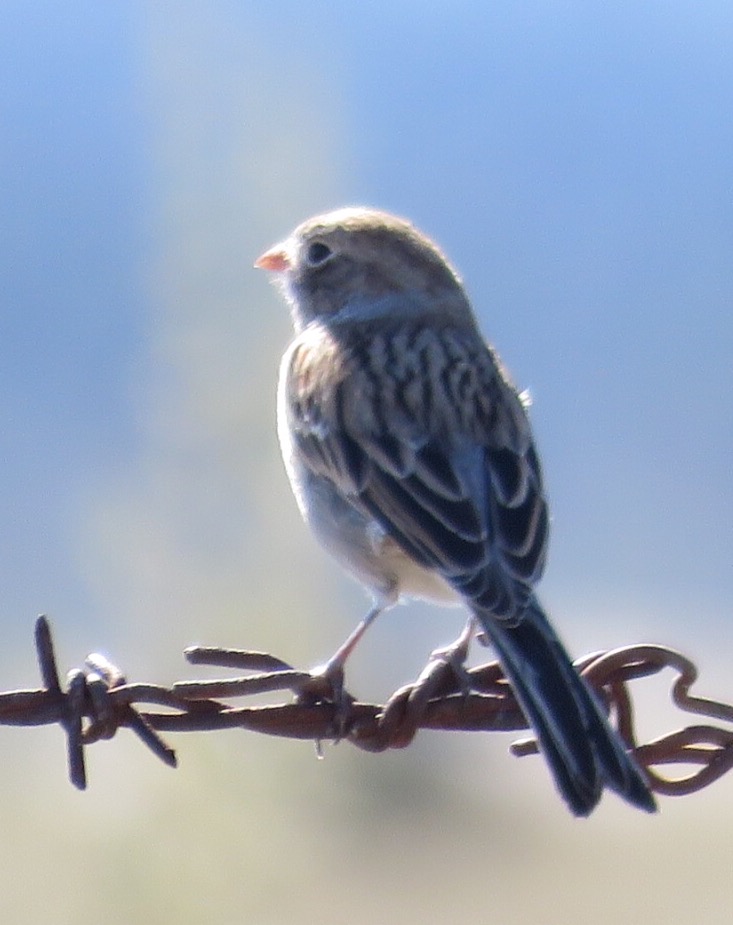
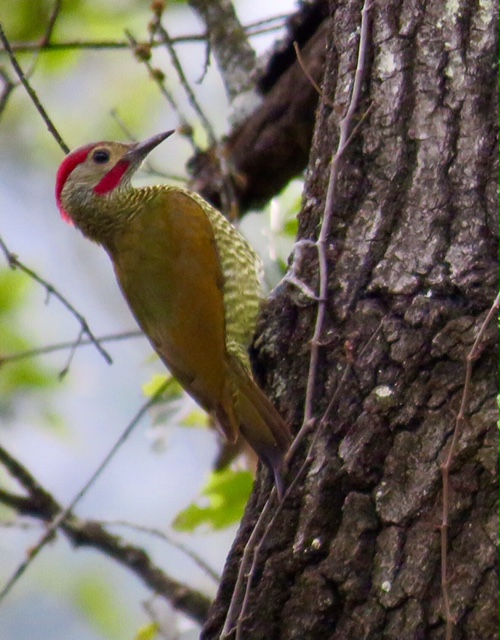
December 8th A BLACK BEAR!
We started our days in a small reserve at the edge of Monterrey's suburbs. Here we found our target - Long-billed Thrasher - relatively quickly so we decided to drive back up to the Plateau.
While driving up across a beautiful winding road through steep gorges Michael suddenly shouted 'Holy ****, A bear'! And there to my amazement stood an American Black Bear, right next to the road! It was completely relaxed, feeding along the roadside. Oblivious to its observers.
After this fantastic sighting we continued our way to the plateau where we birded until dusk. My final new bird in Mexico was a Prairie Falcon. Not a bad finish to a fantastic trip!
Thanks BRANT TOURS for this fantastic trip and thanks to René, Alberto, Erik, Rafael, Mark and Michael for making this whirlwind tour into a great success!
Arjan Dwarshuis
http://www.arjandwarshuis.com/#biggestyear
http://world.observation.org/arjan.php
PLEASE MAKE A DONATION NOW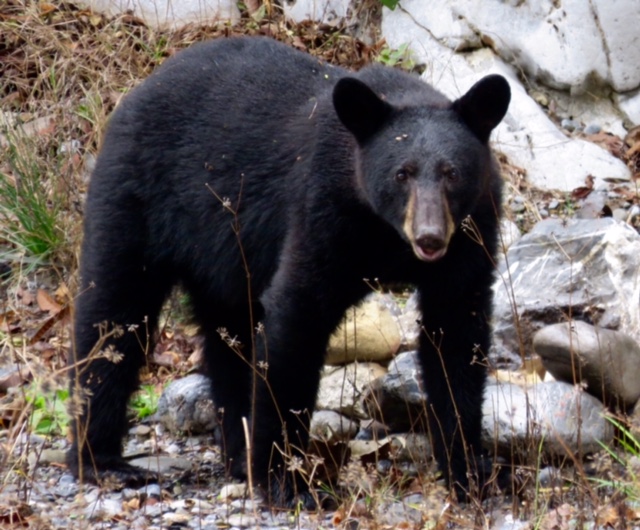
Discussie
Jan van der Laan
·
16 December 2016 08:55
Tufted Jay! Geweldige soort. In de jaren 90 deden de Amerikanen heel moeilijk over die soort omdat de Durango Highway, waar de soort zit, levensgevaarlijk was voor Amerikanen. Mooie beschrijving van het geluid overigens!
Max Berlijn
·
18 December 2016 09:05
Nu al een paar dagen in de US en bijna 6700. Ik denk dat Arjan het wederom heel erg goed doet. De US is geen Costa Rica wat betreft de dagelijkse aangroei maar hij verrast mij dag op dag in een gebied wat ik itt veel van zijn vorige locaties wel ken. Volgens mij heeft die ook weer net op de juiste manier gehandeld door net op tijd de bergen van New Mexico te verlaten waar gisteren een mega pak sneeuw viel. Of die 7000 haalbaar is weet ik niet (was sowieso ongelooflijk hoog). Ik hoorde uit tigste hand dat die zelf op 6910 dacht uit te kunnen komen.
Gebruikers van het forum gaan akkoord met de forumregels.

